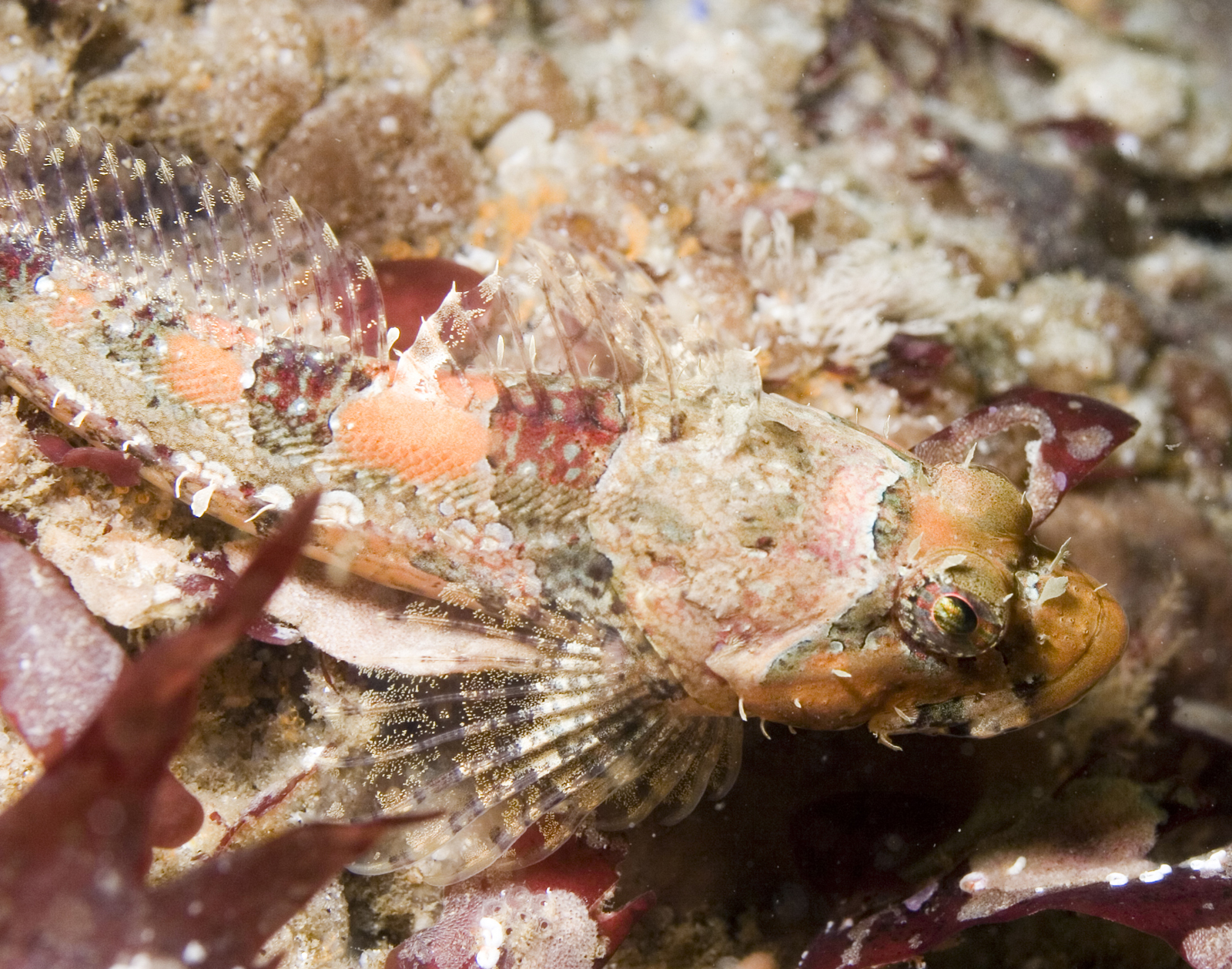|
Ocynectes
''Ocynectes'' is a genus of marine ray-finned fishes belonging to the family Cottidae, the typical sculpins. This species is found in tidepools in the northwestern Pacific Ocean. Taxonomy ''Ocynectes'' was first proposed as a monospecific genus in 1904 by the American ichthyologists David Starr Jordan and Edwin Chapin Starks with ''Ocynectes maschalis'', which they described from Wakanoura in Wakayama Prefecture in Japan, designated as its type species. The 5th edition of ''Fishes of the World'' classifies this genus within the subfamily Cottinae of the family Cottidae, however, other authors classify the genus within the subfamily Psychrolutinae of the family Psychrolutidae. Etymology ''Ocynectes'' is a combination of ''ocy'', which means "swift", and ''nectes'', meaning "swimmer", an allusion to the large pectoral fins of ''O. maschalis''. Species ''Ocynectes'' currently contains two recognized species: Characteristics ''Ocynectes'' was described by Jordan and Starks as be ... [...More Info...] [...Related Items...] OR: [Wikipedia] [Google] [Baidu] |
Cottinae
Cottinae is a subfamily of ray-finned fishes belonging to the Family (biology), family Cottidae, the typical sculpins. The subfamily has species throughout the northern hemisphere in both marine and freshwater habitats. Genera The following genera are included within the subfamily Cottinae: References Cottidae Taxa named by Charles Lucien Bonaparte Ray-finned fish subfamilies {{Cottidae-stub ... [...More Info...] [...Related Items...] OR: [Wikipedia] [Google] [Baidu] |
Cottidae
The Cottidae are a family of fish in the superfamily Cottoidea, the sculpins. It is the largest sculpin family, with about 275 species in 70 genera.Kane, E. A. and T. E. Higham. (2012)Life in the flow lane: differences in pectoral fin morphology suggest transitions in station-holding demand across species of marine sculpin. ''Zoology'' (Jena) 115(4), 223–32. They are referred to simply as cottids to avoid confusion with sculpins of other families. Cottids are distributed worldwide, especially in boreal and colder temperate climates. The center of diversity is the northern Pacific Ocean. Species occupy many types of aquatic habitats, including marine and fresh waters, and deep and shallow zones. A large number occur in near-shore marine habitat types, such as kelp forests and shallow reefs. They can be found in estuaries and in bodies of fresh water. Most cottids are small fish, under in length. The earliest fossil remains of cottids are otoliths potentially assignable to ... [...More Info...] [...Related Items...] OR: [Wikipedia] [Google] [Baidu] |
Psychrolutidae
The fish family Psychrolutidae (commonly known as blobfishes, flathead sculpins, or tadpole sculpins) contains over 35 recognized species in 8 genera. This family consists of bottom-dwelling marine sculpins shaped like tadpoles, with large heads and bodies that taper back into small, flat tails. The skin is loosely attached and movable, and the layer underneath it is gelatinous. The eyes are placed high on the head, focused forward closer to the tip of the snout. Members of the family generally have large, leaf-like pectoral fins and lack scales, although some species are covered with soft spines. This is important to the species as the depths in which they live are highly pressurized and they are ambush/opportunistic/foraging predators that do not expend energy unless they are forced to. The blobfish has a short, broad tongue and conical teeth that are slightly recurved and are arranged in bands in irregular rows along the premaxillaries; canines are completely absent. Teeth are ... [...More Info...] [...Related Items...] OR: [Wikipedia] [Google] [Baidu] |
David Starr Jordan
David Starr Jordan (January 19, 1851 – September 19, 1931) was the founding president of Stanford University, serving from 1891 to 1913. He was an ichthyologist during his research career. Prior to serving as president of Stanford University, he served as president of Indiana University Bloomington, Indiana University from 1885 to 1891. Jordan was also a strong supporter of eugenics, and his published views expressed a fear of "race-degeneration", asserting that cattle and human beings are "governed by the same laws of selection". He was an antimilitarist since he believed that war killed off the best members of the gene pool, and he initially opposed American involvement in World War I. Early life and education Jordan was born in Gainesville (town), New York, Gainesville, New York, and grew up on a farm in upstate New York. His parents made an unorthodox decision to educate him at a local girls' high school. His middle name, Starr, does not appear in early census records, ... [...More Info...] [...Related Items...] OR: [Wikipedia] [Google] [Baidu] |
Sakhalin
Sakhalin ( rus, Сахали́н, p=səxɐˈlʲin) is an island in Northeast Asia. Its north coast lies off the southeastern coast of Khabarovsk Krai in Russia, while its southern tip lies north of the Japanese island of Hokkaido. An island of the West Pacific, Sakhalin divides the Sea of Okhotsk to its east from the Sea of Japan to its southwest. It is administered as part of Sakhalin Oblast and is the largest island of Russia, with an area of . The island has a population of roughly 500,000, the majority of whom are Russians. The indigenous peoples of the island are the Ainu, Oroks, and Nivkhs, who are now present in very small numbers. The island's name is derived from the Manchu word ''Sahaliyan'' (), which was the name of the Qing dynasty city of Aigun. The Ainu people of Sakhalin paid tribute to the Yuan, Ming, and Qing dynasties and accepted official appointments from them. Sometimes the relationship was forced but control from dynasties in China was loose ... [...More Info...] [...Related Items...] OR: [Wikipedia] [Google] [Baidu] |
Standard Length
Fish measurement is the measuring of individual fish and various parts of fish anatomy, their anatomies, for data used in many areas of ichthyology, including Taxonomy (biology), taxonomy and fishery biology. Overall length Standard length (SL) is the length of a fish measured from the tip of the snout to the posterior end of the last vertebra or to the posterior end of the midlateral portion of the Glossary of ichthyology#H, hypural plate. This measurement excludes the length of the caudal fin, caudal (tail) fin. Total length (TL) is the length of a fish measured from the tip of the snout to the tip of the longer lobe of the caudal fin, usually measured with the lobes compressed along the midline. It is a straight-line measure, not measured over the curve of the body. Standard length measurements are used with Teleostei (most Actinopterygii, bony fish), while total length measurements are used with Myxini (hagfish), Petromyzontiformes (lampreys) and usually Elasmobranchii (shark ... [...More Info...] [...Related Items...] OR: [Wikipedia] [Google] [Baidu] |
Lateral Line
The lateral line, also called the lateral line organ (LLO), is a system of sensory organs found in fish, used to detect movement, vibration, and pressure gradients in the surrounding water. The sensory ability is achieved via modified epithelial cells, known as hair cells, which respond to displacement caused by motion and transduce these signals into electrical impulses via excitatory synapses. Lateral lines play an important role in schooling behavior, predation, and orientation. Early in the evolution of fish, some of the sensory organs of the lateral line were modified to function as the electroreceptors called ampullae of Lorenzini. The lateral line system is ancient and basal to the vertebrate clade, as it is found in fishes that diverged over 400 million years ago. Function The lateral line system allows the detection of movement, vibration, and pressure gradients in the water surrounding an animal. It plays an essential role in orientation, predation, and fish ... [...More Info...] [...Related Items...] OR: [Wikipedia] [Google] [Baidu] |
Bero Elegans
''Bero elegans'' is a species of marine ray-finned fish belonging to the family Cottidae, the typical sculpins. This species is found in the northwestern Pacific Ocean. This species grows to a length of 20 centimetres (7.9 in) TL. It is the only known member of the genus ''Bero''. Taxonomy ''Bero elegans'' was first formally described in 1881 by the Austrian ichthyologist Franz Steindachner with its type locality given as Strietok, near Vladivostok on the Sea of Japan. Steindachner classified the new species in the monospecific genus ''Bero''. The 5th edition of ''Fishes of the World'' classifies the genus ''Bero'' within the subfamily Cottinae of the family Cottidae, however, other authors classify the genus within the subfamily Psychrolutinae of the family Psychrolutidae. Etymology ''Bero'' is a local name for this fish at Aomori in Japan. The specific name ''elegans'' mean "elegant" or "refined", an allusion Steindachner did not explain but may be a reference to the ... [...More Info...] [...Related Items...] OR: [Wikipedia] [Google] [Baidu] |
John Otterbein Snyder
John Otterbein Snyder (August 14, 1867 – August 19, 1943) was an American ichthyologist and professor of zoology at Stanford University. History As a student he met David Starr Jordan who inspired him to enter zoology. He eventually became a zoology instructor at Stanford University and served there from 1899 until 1943. He went on several major collecting expeditions aboard the in the early 1900s and organized the U.S. National Museum's fish collection in 1925. The same year he also declined the directorship there so he could return to Stanford. He was a long-term member of the California Academy of Sciences and worked for the California Bureau of Fisheries. He wrote many articles and papers as well as describing several new species of sharks. San Francisco Bay In 1905, Snyder, then assistant professor of zoology at Stanford, published ''Notes on the fishes of the streams flowing into San Francisco Bay'' in ''Report of the Commissioner of Fisheries to the Secretary of Commerc ... [...More Info...] [...Related Items...] OR: [Wikipedia] [Google] [Baidu] |
Pectoral Fin
Fins are moving appendages protruding from the body of fish that interact with water to generate thrust and help the fish aquatic locomotion, swim. Apart from the tail or caudal fin, fish fins have no direct connection with the vertebral column, back bone and are supported only by muscles. Fish fins are distinctive anatomical features with varying structures among different clades: in ray-finned fish (Actinopterygii), fins are mainly composed of bone, bony spine (zoology), spines or ray (fish fin anatomy), rays covered by a thin stretch of fish scale, scaleless skin; in lobe-finned fish (Sarcopterygii) such as coelacanths and lungfish, fins are short rays based around a muscular central limb bud, bud supported by appendicular skeleton, jointed bones; in cartilaginous fish (Chondrichthyes) and jawless fish (Agnatha), fins are fleshy "flipper (anatomy), flippers" supported by a cartilaginous skeleton. Fins at different locations of the fish body serve different purposes, and are ... [...More Info...] [...Related Items...] OR: [Wikipedia] [Google] [Baidu] |
Swift (bird)
The Apodidae, or swifts, form a family of highly aerial birds. They are superficially similar to swallows, but are not closely related to any passerine species. Swifts are placed in the order Apodiformes along with hummingbirds. The treeswifts are closely related to the true swifts, but form a separate family, the Hemiprocnidae. Resemblances between swifts and swallows are due to convergent evolution, reflecting similar life styles based on catching insects in flight. The family name, Apodidae, is derived from the Greek ἄπους (''ápous''), meaning "footless", a reference to the small, weak legs of these most aerial of birds.Jobling (2010) pp. 50–51.Kaufman (2001) p. 329. The tradition of depicting swifts without feet continued into the Middle Ages, as seen in the heraldic martlet. Taxonomy Taxonomists have long classified swifts and treeswifts as relatives of the hummingbirds, a judgment corroborated by the discovery of the Jungornithidae (apparently swift-like hum ... [...More Info...] [...Related Items...] OR: [Wikipedia] [Google] [Baidu] |



